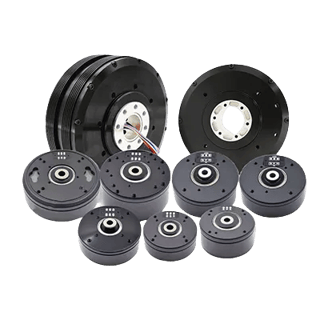Choosing the Right Voltage for Your Mini Robot Motor


Envision two identical robots that are both fitted with the same type of mini robot motor and are unleashed to perform their tasks. One functions effectively and relatively astutely completing operations in a very cool and expeditious manner. On the other hand, the second robot has to work harder than the first, and even when it does so, it frequently stops for hibernation , has high thermal congestion and depletes too much battery in an extremely short duration. What is the difference? The answer is simple but crucial: voltage. Depending on the Mini robot motor chosen for the design, this factor can make or break the whole project in terms of ease of use.
For robotics engineer, hobbyist and project manager, selecting the right voltage to your motor is necessary to achieve best operation of the motor, power comprehension and durability of the motor. In this guide, we will jump into practical recommendations and factors which will help you make better choices in your projects whether it is for building tiny robots for research, education or commercial reasons.
The Importance of Voltage in Mini Robot Motors
Voltage directly influences the motor's speed, torque, and overall efficiency. Too low, and the motor will underperform, failing to reach its full potential. Too high, and it can overheat, leading to motor damage or early failure. According to industry reports, over 40% of motor failures in small robotics are linked to incorrect voltage supply, either too high or too low.
By understanding voltage specifications and matching them to your motor’s capabilities, you can extend the lifespan of your mini robot motor and ensure smooth, reliable operation.
Factors to Consider When Choosing the Right Voltage
Motor Specifications and Voltage Range Every mini robot motor has a recommended operating voltage range, typically specified in the datasheet. For example, the TurboFlys mini robot motor operates best between 6V and 12V, offering a balance between speed and torque. Staying within this range ensures optimal performance without compromising the motor’s lifespan.
Application and Load Consider what your robot will be doing. Are you building a robot for light tasks like carrying sensors, or will it need to handle more demanding jobs like lifting objects or navigating rough terrain? The required torque and speed will influence your choice of voltage. For instance, higher voltage generally results in higher speed and torque but requires careful calibration to avoid overheating.
Power Source Efficiency Batteries are the most common power source for mini robots, and voltage selection impacts battery life. Lower voltage typically extends battery life but may reduce motor speed. A higher voltage may boost performance, but it will drain the battery faster. When selecting a motor for mobile robotics, ensure the voltage matches the battery’s output for maximum efficiency.
Environmental Conditions Robots often operate in a variety of environments, from factory floors to outdoor settings. Temperature fluctuations, moisture, and friction can affect a motor’s performance. Motors like the TurboFlys mini robot motor are designed to handle a range of environmental conditions, but even so, selecting the right voltage will help mitigate wear and tear under challenging conditions.
Voltage Control Mechanisms For robotics engineers working on advanced projects, integrating a voltage regulator can provide more precise control. This is especially useful when dealing with fluctuating power supplies. Regulators can help maintain consistent voltage to avoid damage or performance dips.


How Voltage Impacts Motor Performance
A common misconception is that more voltage automatically means better performance. While higher voltage can increase speed and torque, it can also lead to overheating if the motor isn't designed to handle the extra load. A survey of robotics projects showed that approximately 25% of motors fail prematurely due to excessive voltage, reducing their operational lifespan by up to 50%.
Here’s a breakdown of how voltage impacts performance:
Under Voltage: The motor may not have enough power to function properly, causing slow movement and stalling.
Over Voltage: The motor may overheat, damaging components and leading to early failure.
Optimal Voltage: The motor operates efficiently, delivering the best balance of speed, torque, and power efficiency.
Practical Tips for Voltage Optimization
Always check the motor’s voltage range: Adhering to the manufacturer’s specifications ensures longevity and efficiency.
Consider your robot’s workload: Heavier loads may require higher voltage, but ensure the motor is built to handle it.
Use voltage regulation: For more precision and safety, consider adding a voltage regulator to your design.
Test in real conditions: Simulate real-world environments and workloads to ensure your voltage choice meets practical demands.
The Relevance of TurboFlys Mini Robot Motor
TurboFlys offers a range of mini robot motors that are optimized for a variety of applications, from light mobile robots to more demanding industrial bots. The TurboFlys mini robot motor is engineered to handle voltage fluctuations efficiently, ensuring long-lasting performance even under high loads. By selecting the right voltage for these motors, users can achieve reliable and energy-efficient results in their robotics projects.
Conclusion: Voltage as the Key to Success
Choosing the right voltage for your mini robot motor is essential for optimizing its performance, reliability, and efficiency. With the right approach, you’ll avoid common pitfalls like overheating, stalling, or reduced battery life. Whether you're an engineer working on complex robotics systems or a hobbyist building your first bot, understanding the role of voltage is a vital step toward creating a successful, reliable robot.
When it comes to mini robot motors, including the TurboFlys mini robot motor, following these guidelines will ensure you select the optimal voltage, achieving the perfect balance of power and performance for your project.
